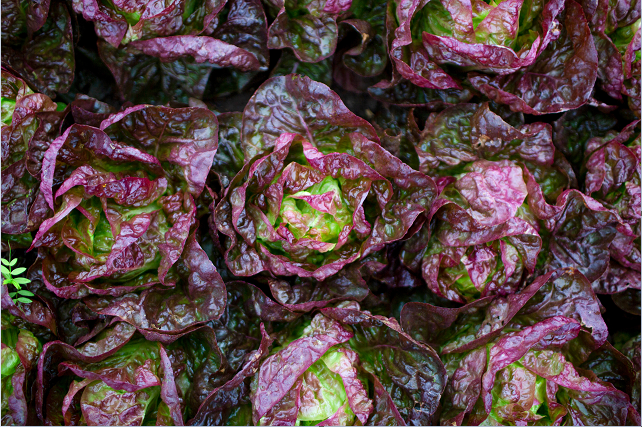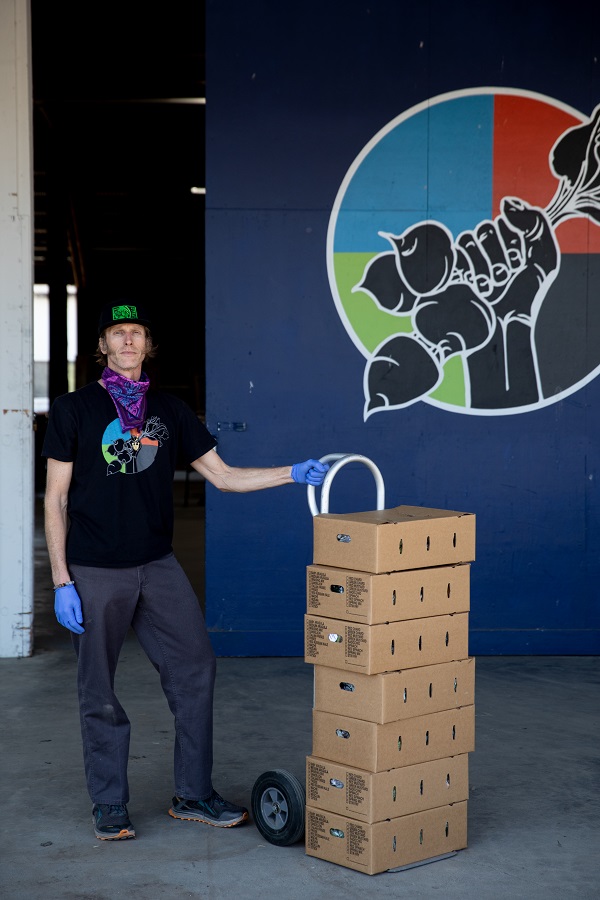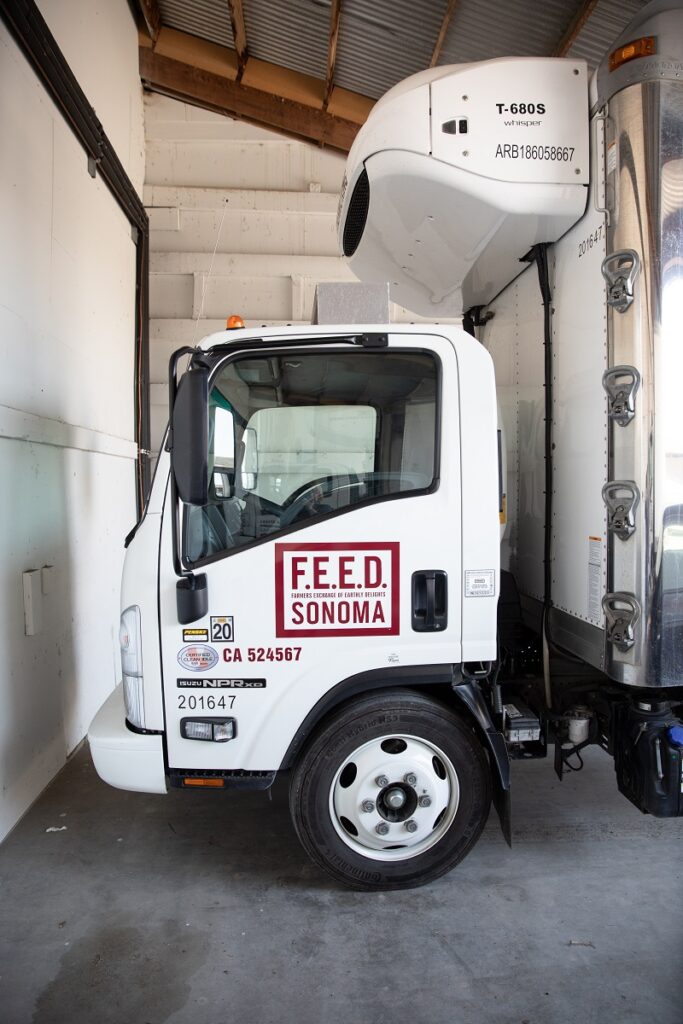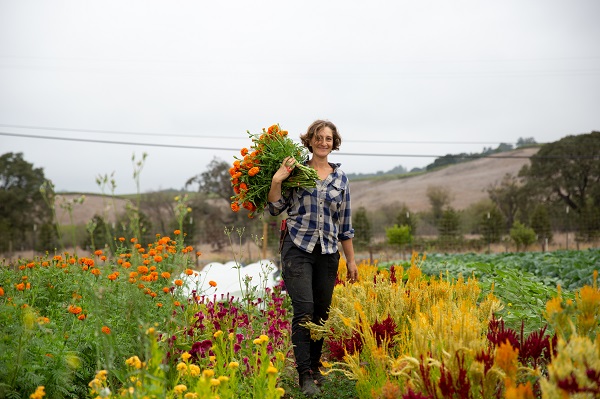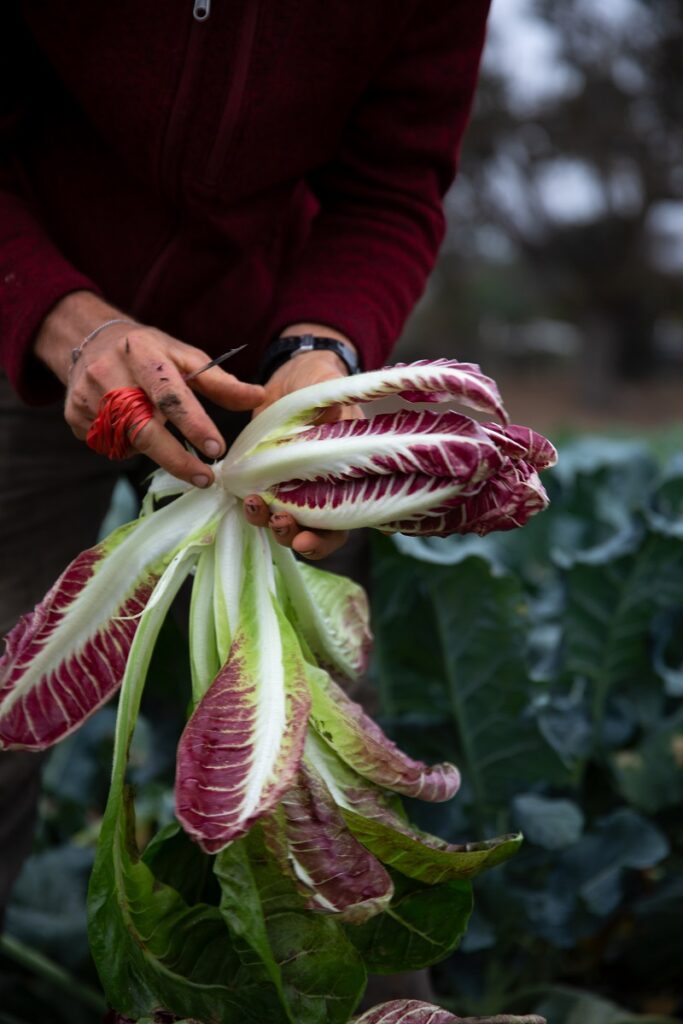What Does “Local Food” Really Mean?
Photos: Paige Green Photography
In 2007, the New Oxford American Dictionary named “locavore” its Word of the Year. Farmers’ markets were proliferating nationwide, tripling in just 15 years. Restaurants began emulating farm-to-table trailblazers like Chez Panisse. Then came surprise bestselling books like The Omnivore’s Dilemma and films like Food, Inc. as millions reconsidered dinner’s long and convoluted journey to their plates. Local food was the new buzz phrase.
If one moment marks the tipping point of this zeitgeist (evidenced by its mention by multiple interview subjects for this story) it would have to be in 2011, when a comedy sketch aired on the debut episode of Portlandia. In it, two overzealous diners pepper a waitress with questions about the source of their chicken: where it was raised, how it was treated, eventually requesting paperwork detailing the exact bird they’ll be eating. Still not satisfied, in the end, they leave the restaurant to go inspect the farm for themselves.
No longer a fringe oddity, today, locally branded food is big business and unsurprisingly, Big Business has taken notice. For example, recently, a major grocery store with locations in Sonoma County displayed a glossy new campaign above its produce department with slogans like “Support your local family farm.”
FEED Cooperative, a farmer- and employee-owned business distributing for 80+ North Bay producers, would benefit enormously from such a commitment—if only they shared the same definition of local. (Full disclosure: the authors’ wife Kelsey Wiig works part-time on the FEED Cooperative marketing team and as such, is one of the worker-owners of the FEED cooperative.)
But when it comes to defining local, things get murky pretty quick. The definition used by that national grocer reads “from the same state or is a one-day drive from the farm to the store.” Under this definition, the sprawling corporate fields of Imperial County 700 miles away fall into the same category as a small family farm down the road.
The 2008 American Food, Conservation, and Energy Act has another definition, defining local as “less than 400 miles from the origin of the product; or the State in which the product is produced.” But not only does this act have no legally binding teeth, it falls far short of what most consumers imagine when they aim to support local farms, lumping together small family farms with corporate behemoths.
To complicate things further, the 2012 USDA report Local Food Systems: Concepts, Impacts, and Issues defines local food as “food sold via direct-to-consumer and intermediated marketing channels,” or sales made directly (or through locally specific aggregators like FEED) to restaurants, grocers, and institutions. Under this definition, geography seems less important than the type of relationship.
Sonoma County Local
Oliver’s Market, a locally owned grocer with four locations in Cotati, Santa Rosa and Windsor, created their own definition of local. Mike Peterson, produce coordinator, explains, “It’s a hard line in the sand with us: local means Sonoma County.” Last year alone, Peterson helped purchase over a million dollars in produce grown within the county. Their stores do, of course, carry products from further afield which Peterson makes clear.
“I’ve got nothing against Bakersfield or the farms down there. But it’s simply not the same as a local business, and so you’ll never see a label here claiming that,” says Peterson.
Oliver’s sources in Sonoma County for the same reasons their customers request it: higher quality, freshness, and more diversity of product, and to support a local economy to which they themselves belong. Sourcing locally, Peterson admits, isn’t always as easy as working with a big international distributor, where one simply types a product into the computer, and it arrives a few days later.
Instead, Peterson takes time each season to work with suppliers to develop crop plans, ensuring a balance of supply and demand throughout the year. And because costs in Sonoma County—of land and labor in particular—are higher, local farms often can’t compete with the low prices of imported goods, so Peterson sets a lower margin on local products to keep them competitive. Additionally, Oliver’s must continuously invest in educating consumers about how their definition differs from those of other grocers.
While this extra effort seems to be paying off for Oliver’s, Peterson wouldn’t mind rules to better regulate definitions of local, leveling the playing field and preventing confusion or even misrepresentation. After all, it’s already done with wine, which is labeled with American Viticultural Area (AVA) designations.
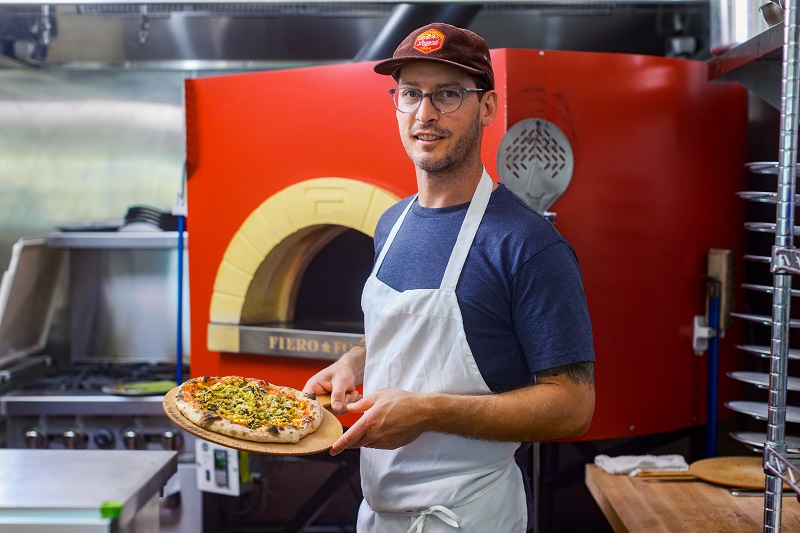
” For us, working with folks in our own community is what we do. A lot of the people we source from, theyre, our friends.”
-Dane Baratta, Slow Co. Pizza
Peterson points out how restaurant menus feature universally accepted symbols like GF (Gluten Free) or V (Vegan). “Imagine if there was one that read SC for Sonoma County, that way customers would really know what they were buying.”
So Co. Local
For now, no such symbol has caught on. For instance, you won’t even see it on the menu at Cotati’s newest eatery, Slow Co. Pizza, despite the fact that they source all their toppings from local farms and artisans. In fact, walking into this unpretentious pizzeria—opened last year by Dane Baratta and Dany Cleland—one might not realize just how unique they are.
Baratta and Cleland, who had just returned from a visit to nearby Coyote Family Farm where they’d foraged fava greens for the day’s special, agree that probably only one in five customers truly understand the effort they go through to source locally; most folks just like the pizza.
“Sure, we could use a big distributor and it’d be much easier, much cheaper,” said Baratta. “But clicking a button on a computer, it just feels so disconnected. For us, working with folks in our own community is why we do what we do. A lot of the people we source from, they’re our friends.”
Yet, while they both concede that there’s a lot of misinformation in the food world, they’re reluctant about regulation. Cleland points out that even organic certification has its limits, proving onerous for smaller businesses.
Kathleen Mueller, founder of Tienda Salsita, a Sonoma County salsa manufacturer that sources its ingredients from small local farms agrees. For her, certification acts as an inferior surrogate for direct relationships. When selling at the farmers’ markets, she savors any chance to not only share her own story as an artisan but also those of the Sonoma County farmers who grow her salsa’s fresh chillis, tomatoes, garlic, and tomatillos.
Once her jars hit the retail shelf, however, Mueller no longer has that option. There, in order to distinguish her product from those using anonymous ingredients from hundreds or even thousands of miles away, she has to rely either on reputation or on a small label that must, in just a few words, explain how her higher cost is justified by both the quality and what that purchase will mean for the local community.
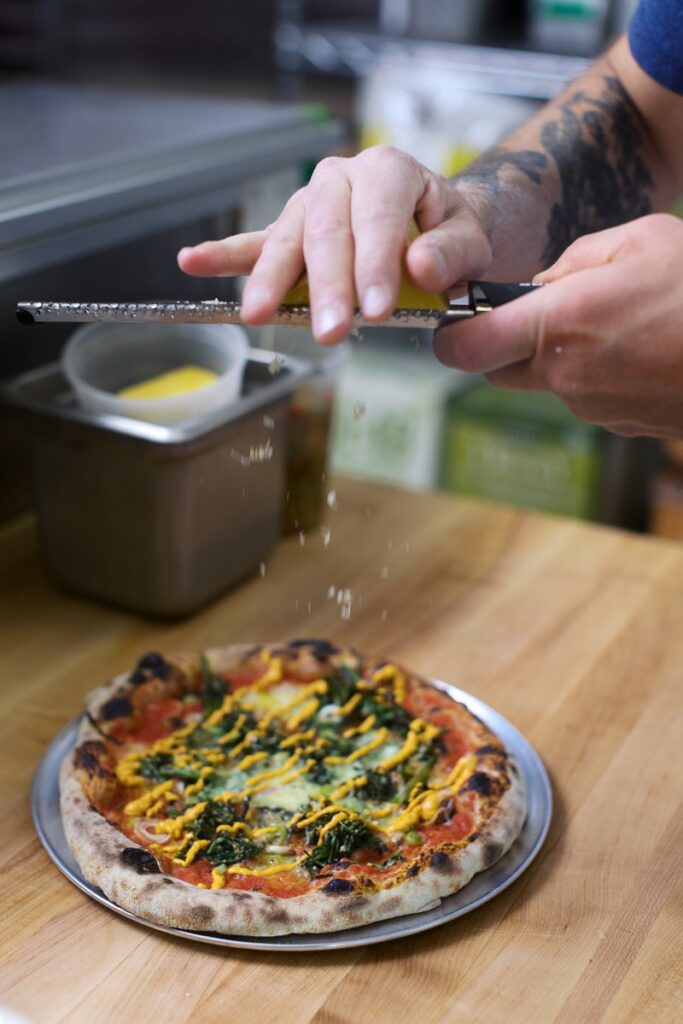
Meanwhile, at the government level, two federally funded USDA programs would expand local food access by injecting over $1 billion to help food banks and public schools purchase direct from small farms and food hubs. As of this writing, however, the new administration has decided to not fund these programs for 2025 and beyond, cutting off a supply of fresh, local food to families in need.
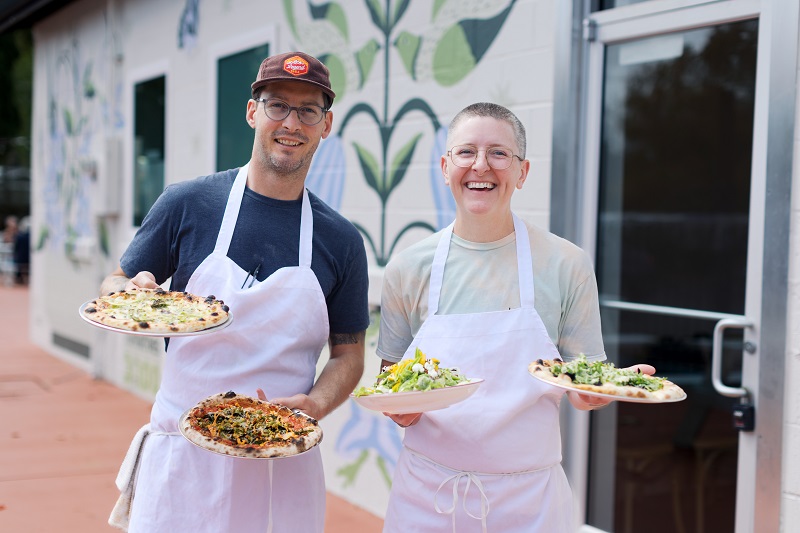
Local food—despite its growth over the past few decades—still remains a niche market. As reported by the National Sustainable Agriculture Coalition in their blog post Census of Agriculture Reveals the Promise of Regional Food Systems, in 2022, over 60,000 US farms reported more than $14 billion in sales in local products to retail markets and food hubs, up from just $5 billion and half as many farms in 2017. Even so, that USDA report mentioned earlier estimates that local food still accounts for only 1.5% of U.S. agricultural production.
Nevertheless, it is growing, and people tend to seek resilience within their own community. Or as Dylan Stein, wholesale manager at FEED observed during the pandemic, “When things got tough, people suddenly realized just how important local food really is.” But with multiple competing definitions of local, the question remains: Who will decide what it really means?
FEED Cooperative
Oliver’s Market
Slow Cº. Pizza
Tienda Salsita

